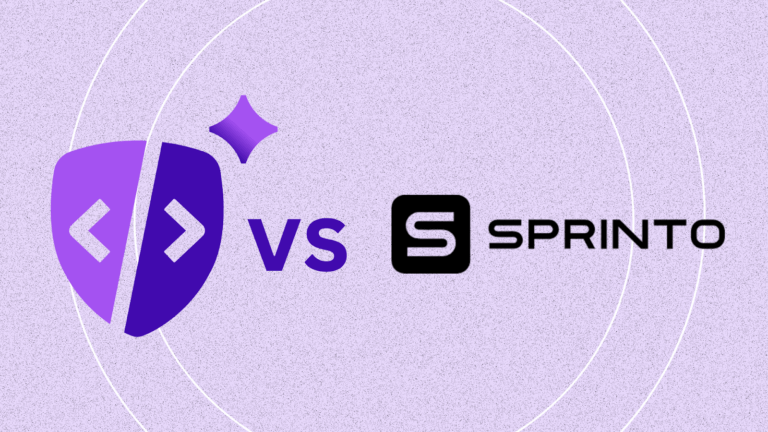PCI DSS 4.0.1 expands compliance expectations beyond infrastructure to include what happens inside the browser. Cloudflare and Feroot’s PaymentGuard AI work at different layers of that protection. Cloudflare secures the network edge through its global content delivery network (CDN), web application firewall (WAF), and DDoS mitigation. It also offers Page Shield, a feature that provides limited monitoring of client-side scripts. PaymentGuard AI specializes in deep client-side visibility and continuous compliance automation for Requirements 6.4.3 and 11.6.1. Together, they create complete coverage from edge to browser, each serving a distinct purpose within PCI DSS 4.0.1.
Cloudflare: Edge security, CDN, WAF, DDoS, and some client-side monitoring
Cloudflare is built for large-scale network and application protection. Its CDN accelerates content delivery, the WAF filters web traffic to block attacks such as SQL injection and cross-site scripting, and its DDoS mitigation absorbs massive traffic floods before they reach origin servers. These capabilities help organizations meet PCI DSS 4.0.1 Requirements 1.2.1, 6.4.1/6.4.2, and 4.2.1 & 4.2.1.1 by securing network perimeters and protecting web applications.
Cloudflare’s Page Shield provides client-side resource monitoring (scripts, connections, cookies) and code-change/malicious-connection detection (feature set varies by plan). It can support elements of PCI DSS 6.4.3 and 11.6.1, but it’s part of a broader edge platform rather than a dedicated compliance-evidence automation layer.
Key strengths:
- Global CDN and WAF for scalable web and application security
- DDoS mitigation that protects infrastructure from large-scale attacks
- Encryption and secure data transmission supporting PCI 4.2.1 and 4.2.1.1
- Page Shield feature that helps detect new or modified JavaScript files
Cloudflare secures the network and edge effectively, while ongoing client-side monitoring and evidence needs for 6.4.3 and 11.6.1 typically require a specialized layer like PaymentGuard AI.
Feroot PaymentGuard AI: Real-time client-side protection and compliance
Feroot PaymentGuard AI focuses on the customer-facing side of your website, where payment data is entered. It continuously monitors all JavaScript, tags, and iFrames that load in the browser, detecting unauthorized changes or suspicious behavior in real time. The platform automates PCI DSS 4.0.1 compliance for Requirements 6.4.3 and 11.6.1, covering script authorization, integrity verification, and a maintained script inventory with justification while producing auditor-ready evidence and alerting to meet required monitoring cadence.
Key strengths:
- Comprehensive visibility into all scripts running in browsers across payment pages
- Behavioral monitoring that detects tampering, data exfiltration, and injection attempts
- Automated evidence reporting mapped directly to PCI DSS 6.4.3 and 11.6.1
- Deep detection coverage that goes beyond what WAFs or edge platforms can provide
PaymentGuard AI ensures your compliance posture extends into the browser environment, something many security stacks overlook.
Feature comparison table
| Capability | Feroot PaymentGuard AI | Cloudflare |
| Primary focus | Real-time client-side protection and compliance automation | Edge and application-layer security (CDN, WAF, DDoS) |
| PCI DSS requirements covered | 6.4.3, 11.6.1 (client-side security) | 1.2.1 (NSC configuration), 6.4.1/6.4.2 (web-app protection/WAF), 4.2.1 & 4.2.1.1 (TLS and trusted key/cert inventory) |
| Control domains | Browser scripts, payment page integrity, and data protection | Network edge, application layer, and limited browser visibility |
| Threat monitoring | Detects unauthorized script changes, DOM manipulation, and data leaks in real time | Blocks DDoS and web attacks; Page Shield detects new or modified JavaScript scripts |
| Evidence automation | Generates QSA-ready audit logs and compliance reports | Provides traffic analytics, WAF logs, and alerting but limited compliance mapping |
How Feroot PaymentGuard AI and Cloudflare work together
Cloudflare and PaymentGuard AI protect separate but equally important layers of your PCI DSS 4.0 environment. Cloudflare shields your servers and applications from external attacks before traffic reaches your infrastructure. PaymentGuard AI monitors the browser to ensure scripts behave safely once the page loads.
Example:
Cloudflare’s WAF can block a malicious request or filter an attempted exploit. Once the content is delivered to a customer’s browser, PaymentGuard AI detects if a trusted third-party tag or marketing script begins capturing cardholder data without authorization. Both solutions are essential: Cloudflare addresses 6.4.1/6.4.2 at the edge, and PaymentGuard AI addresses 6.4.3/11.6.1 in the browser.
Why both matter:
Cloudflare covers PCI DSS controls focused on network and application protection (1.2.1, 6.4.1/6.4.2, and 4.2.1 & 4.2.1.1). PaymentGuard AI fulfills the client-side monitoring and integrity requirements (6.4.3 and 11.6.1) that demand continuous oversight and verifiable reporting.
How to decide which solution works best for your organization
Choose Cloudflare if:
- You need a comprehensive edge platform that combines CDN performance with WAF and DDoS protection.
- Your main focus is securing infrastructure, applications, and network traffic to meet PCI DSS requirements 1.2.1, 4.2.1 & 4.2.1.1, and 6.4.1/6.4.2.
- You want to strengthen perimeter defense and improve availability under high-traffic or attack conditions.
Choose Feroot PaymentGuard AI if:
- You handle payment data through browser-based interactions and use third-party scripts on checkout or form pages.
- You must automate compliance and evidence collection for PCI DSS 4.0 Requirements 6.4.3 and 11.6.1.
- You want continuous, real-time visibility into what scripts are doing in customer browsers, not just alerts from network-based systems.
Best results come from using both: Cloudflare provides a resilient, secure foundation for your web infrastructure, while PaymentGuard AI gives you visibility and compliance assurance inside the browser, the layer Cloudflare cannot fully see.
Does Feroot replace Cloudflare?
No. Cloudflare protects the edge with CDN, WAF, and DDoS. Feroot PaymentGuard AI protects the browser layer where PCI DSS 6.4.3 and 11.6.1 apply. They are complementary.
Is Cloudflare Page Shield enough to pass 6.4.3 and 11.6.1?
Page Shield adds visibility, but PCI DSS requires proof of authorization, integrity validation, continuous detection, and audit-ready evidence. PaymentGuard automates these outcomes end to end and maps them directly to 6.4.3 and 11.6.1.
What exactly do QSAs want to see for 6.4.3?
A complete script inventory with source, owner, and justification, explicit approvals, and integrity verification such as CSP or SRI or equivalent. PaymentGuard AI maintains the inventory, captures approvals and justifications, and validates integrity continuously.
What do QSAs expect for 11.6.1?
Continuous or TRA-defined monitoring of payment pages as rendered in the browser, with alerts, routing, escalation, and closure evidence. PaymentGuard provides live detection logs, alert trails, and resolution records.
Summary
Cloudflare and PaymentGuard AI address distinct parts of PCI DSS 4.0.1 compliance. Cloudflare strengthens your perimeter with edge and application-layer security, helping you meet requirements for traffic protection and data transmission. PaymentGuard AI focuses on the client side, where scripts execute and sensitive data is most exposed, delivering real-time monitoring and automated evidence. Page Shield offers helpful client-side visibility (features vary by plan), while PaymentGuard AI provides the depth, automation, and compliance precision that PCI 6.4.3 and 11.6.1 demand. Together, they give you the layered confidence needed to maintain full PCI DSS 4.0 compliance across every surface.
See how PaymentGuard AI automates compliance, book your free demo today.


